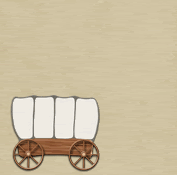"If you are doing a sporting event, you dress in clothes conducive to that event, if you are going swimming you wear a swimming suit, if you go on trek, walking in the path of those pioneers, you wear pioneer clothing." --Rae Lee Curtis
These are some GREAT examples of pioneer clothing!
WHAT TO WEAR ON THE TREK
These are some GREAT examples of pioneer clothing!
WHAT TO WEAR ON THE TREK
Dressing in pioneer clothing will have a tremendous impact on the spirit of the trek. The accompanying materials will help provide a historical perspective of how pioneers dressed and help identify what types of clothing to bring that will promote our trek’s “Pioneer Spirit.” It is our desire and hope that all participants will want to dress in period-type clothing for our trek.
Please don’t spend a lot of time or money on obtaining or creating clothing. We will be sitting on the ground, wading through water, walking in dusty conditions and clothes may get very dirty or even damaged. Many items that can approximate historical clothing can be obtained at a low cost from second-hand stores (DI, Savers, etc).
Shoes
For both women and men, shoes need not be “period” style. Comfort is most important. Do not wear new hiking boots unless you have taken at least two months to break them in. Bring two pair, so if one gets wet or cause blisters, the other pair can be worn.
Socks
Pack clean socks for each day. Use of thin nylon or propylene socks under
moisture-wicking (wool or wool-blend) socks is best.
Men’s clothing
Men’s shirts
Men’s shirts were worn loose. Plain colors were common, but stripes or plaids were also used. Light colors will be coolest. Choose something larger than a regular fit, with long sleeves. (Bring at least two)
Pants
Pants were also worn loose. Corduroy, twill and canvas pants are good choices. Trekkers in our day find that wool is too hot, but cotton and similar fabrics work great. Colors include blue, black, gray, browns, especially beige and tan. Choose loose fitting through the crotch and thigh area to add comfort. (Bring at least two)
Suspenders(optional )
Men’s pants were often held up by suspenders that were buttoned on the outside
of the waistband, and crossed in the back.
Hats(mandatory)
Men’s everyday hats ranged from straw hats, wide brimmed low felt hats, or round crowned hat. Even with a hat, it will be important to wear sunscreen. A hat with a chinstrap is recommended.Please: No baseball caps
Women’s Clothing
Dresses (or Skirt & Blouse)
Women’s basic dresses were floor length. They may be plain or have many ruffles. The sleeves were full, and long, with buttons or bands at the wrist. Necklines were usually high, with buttons up the front. Fabrics were cotton in solid colors or small print. Bright colors were popular (especially bright yellow). Blouses and long skirts or jumpers may be used. Pioneer trekkers now have found that dresses and skirts should be mid-calf (but NOT any shorter!) or above top of a hiking boot in length (so the girls do not trip over their skirts while pulling). It is recommended that each participant have two outfits. If possible, the dress or skirt should have pockets.
Aprons (optional, at least one is recommended)
The standard apron was six to twelve inches shorter than the skirt length. It is gathered at the waist and tied. Daytime aprons were made of calico remnants. For trekking today, large deep pockets are important to be able to carry different items along the trail. (Apron pockets may not be as critical if dresses worn include adequate pockets.
Bonnets(mandatory)
Women wore bonnets whenever they were outside. They were made of cotton with a deep stiffened brim and back ruffle to protect the neck. They may be white, plain colors or a print, but they never matched the fabric of the dress. Today, bonnets or straw hats for the girls are important; they need to have something that will protect them from the sun. Whatever style is worn, it should include a way to secure it against the wind. Although the bonnet will protect against sun, it is important to bring and wear sunscreen.
Pantaloons (optional, but strongly recommended)
Pantaloons were worn underneath the dress and were normally white. They reached between knee and mid calf. One may use loose, knee-length shorts, scrubs, or pajama pants that have been hemmed shorter. Wearing pantaloons helps maintain modesty in trekking situations.
Additional clothing needed
Rain poncho or waterproof jacket
Jacket (for night-time)
Leather gloves (optional)
Please do not wear:
Jeans (blue or otherwise)
Baseball caps
Tank tops
T-shirts
Tight or short dresses
Brand new shoes
Opened toed shoes
Contact lenses will probably be uncomfortable








No comments:
Post a Comment